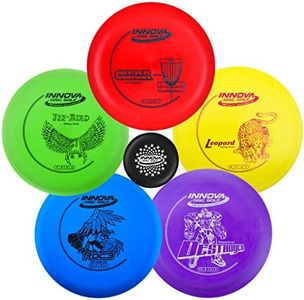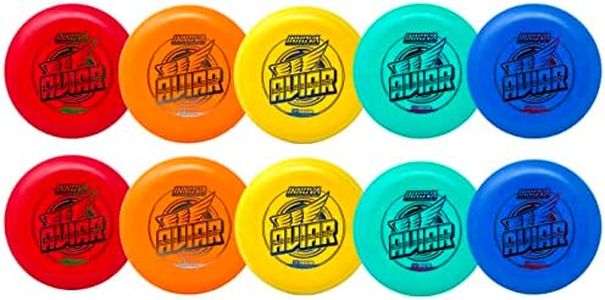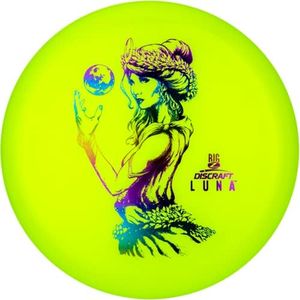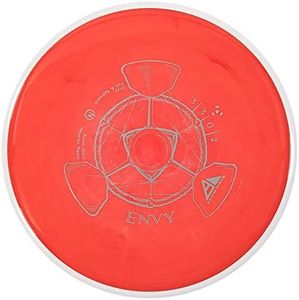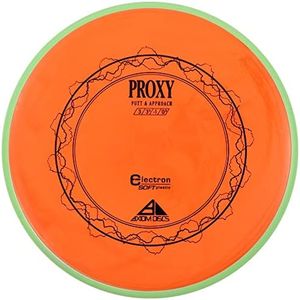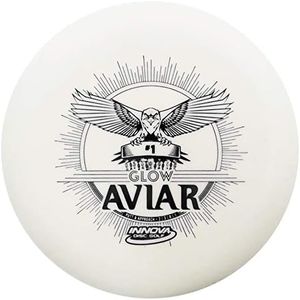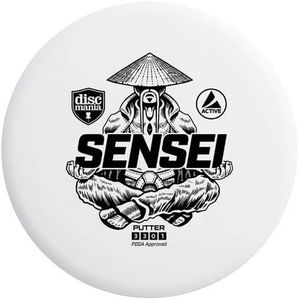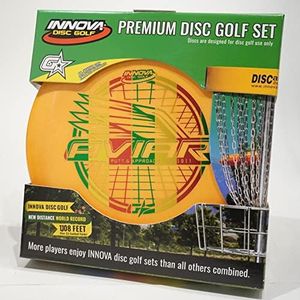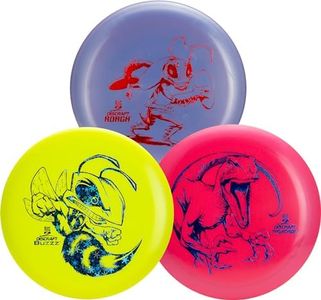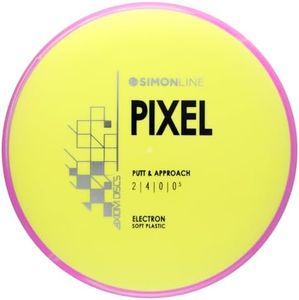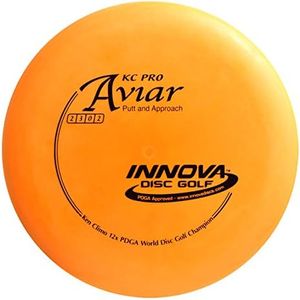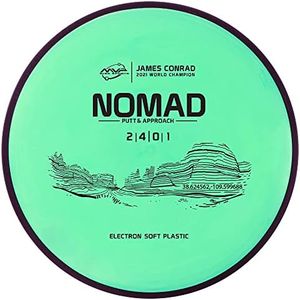We Use CookiesWe use cookies to enhance the security, performance,
functionality and for analytical and promotional activities. By continuing to browse this site you
are agreeing to our privacy policy
10 Best Disc Golf Putters
From leading brands and best sellers available on the web.By clicking on a link to a third party's website, log data is shared with that third party.
Buying Guide for the Best Disc Golf Putters
Choosing the best disc golf putter can significantly impact your game, especially when it comes to short-range throws and putting into the basket. Putters are designed to fly slower, straighter, and with more control than other disc types, which makes them ideal for approaches and scoring shots. Knowing which features and characteristics to consider will help you find the disc that feels best in your hand and suits your throwing style or local course conditions.Plastic TypePlastic type refers to the material and texture of your disc, which affects its grip, durability, and flight. Softer plastics offer added grip, which some players prefer for confidence in wet or cold conditions. Harder plastics tend to last longer and can maintain their flight characteristics over time. Players who prioritize feel often try different plastic blends in their hands; if you play in changing weather or value comfort, prioritize a grip-focused plastic. Heavier users who want long-lasting performance might select harder, more durable ones.
Flight NumbersFlight numbers for putters usually include speed, glide, turn, and fade and indicate how the disc behaves when thrown. Lower speed numbers mean slower throws (which is common and desired in putters), higher glide provides more carry and can help with longer putts, turn shows how much the disc will curve to the right (for right-handed backhand throws), and fade tells you how much the disc will hook left as it slows down. If you want a very straight, predictable shot, opt for low turn and fade putters. If you’re using your putter for approaches in windy or variable conditions, a bit more fade can add stability.
WeightWeight is how heavy the disc is, usually measured in grams. Lighter putters can be easier to throw for younger players or those with less hand strength, but heavier putters tend to offer more stability and resist wind better, often favored for their reliable feel on putts. Most players find comfort between 170 and 175 grams, but experimenting within that range helps determine which weight feels best in the hand and is easiest to control for your individual throwing motion.
Shape (Profile and Rim)The shape refers to the feel of the putter's rim and the height (profile) of the disc. Some putters have a flat top while others are more rounded or even slightly beaded (a bump along the rim). A flatter putter can provide a cleaner release while a rounded one may feel more comfortable in your grip. Beaded rims offer added stability on release and can help with grip consistency, but some players prefer beadless for a quicker, smoother feel. The right profile is about what feels natural in your hand; try different shapes to see which gives you the confidence and comfort for consistent putting.
StabilityStability describes how straight the putter flies or if it tends to curve off course. Overstable putters resist turning to the right and finish with more leftward fade, which can be helpful in windy conditions or for specific putting techniques. Understable putters have more rightward movement (for right-handed backhand throws) and are better for gentle, longer putts or those learning to throw straight. If you’re seeking reliability in all conditions, lean toward more stable or overstable putters, but if you mostly want touch and accuracy for short-range putts, a neutral putter will often serve best.
